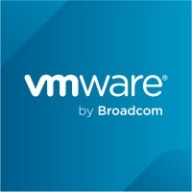

VMware VeloCloud SD-WAN and Meraki SD-WAN compete in the SD-WAN solutions category. VMware VeloCloud has an upper hand in network performance optimization and cloud integration, while Meraki excels in integration capabilities and ease of management.
Features: VMware VeloCloud stands out with Dynamic Multipath Optimization (DMPO) for real-time performance insights, dynamic traffic management, and strong connectivity. Its platform supports extensive automation and zero-touch provisioning, which eases scalable implementations. Meraki SD-WAN offers centralized cloud management with a comprehensive dashboard, enabling seamless integration across devices. Load balancing and extensive security features make it attractive for straightforward networking solutions, focusing on ease and integration.
Room for Improvement: VMware VeloCloud could enhance security integration and offer more intuitive reporting capabilities. Its pricing model and global gateway distribution also require improvement. Meraki SD-WAN users suggest enhancements in security features and performance. There's a demand for cost optimization and better connectivity for large-scale enterprises to improve scalability and reporting.
Ease of Deployment and Customer Service: VMware VeloCloud is praised for streamlined deployment options across private, public, and hybrid cloud environments, though technical support needs more comprehensive solutions and quicker responses. Meraki SD-WAN offers simplicity in setup and deployment with private and public cloud options, facilitating swift deployments. Its customer service is supportive, with competitive pricing and subscription models.
Pricing and ROI: VMware VeloCloud positions itself as a premium option with a comprehensive feature set that integrates well within data centers, albeit at a higher cost, posing challenges for pricing and alignment with use cases. Meraki SD-WAN presents a cost-effective alternative with competitive pricing models and flexible subscription options, appealing to businesses seeking efficient network solutions with strong ROI through reduced operational complexity.
The deployment time with VMware VeloCloud SD-WAN saves 50 percent compared to traditional MPLS networks.
We raised it in TAC, and they were very approachable and supportive.
I appreciate having dedicated service engineers who manage our account and ensure any technical issues are addressed efficiently.
Scalability depends on the model number of each switch, but generally, it is scalable according to need.
The customer base for VMware VeloCloud SD-WAN has been growing 30 to 40 percent per year when transitioning from traditional MPLS networks.
Sometimes it is not working in Azure or GCP as it has interoperability only with some clouds, so that part needs work.
The technical team from VMware VeloCloud SD-WAN addresses these issues promptly, making us very happy with their support.
Overall, VMware VeloCloud SD-WAN is a stable solution.
VeloCloud provides much more detail and many more tabs for troubleshooting everything, such as ARP, IPv4, IPv6, TCP dumps, routing, and switching.
I work with Fortinet where with a single command you can deploy the entire SD-WAN along with FortiGuard within minutes.
I would like to see improved security features, such as adding more SASE functions.
Unlike the comprehensive reports we receive from Palo Alto for our firewalls, VMware VeloCloud SD-WAN doesn't offer detailed reports that effectively convey the solution's benefits to management.
If the license expires in FortiGate, the basic functionality will work, but in Meraki SD-WAN, the entire system will shut down.
The pricing is high, making the margin thin, which limits mark-up opportunities from the wholesale price.
The pricing involves licensing for the VeloCloud gateway based on the bandwidth used.
The SD-WAN features of Meraki SD-WAN include the overlay setup that can connect between the switch and the Viptela device or between the VCE of another vendor without needing to be vendor-specific.
The architecture allows us to see whether the physical cable is connected or disconnected.
Previously, organizations used MPLS links for 1 MB at around $200, but now they can use 4G or 5G SIM cards for half that price while achieving more bandwidth.
Its proprietary Dynamic Multipath Optimization (DMP) technology is regarded as the most powerful and valuable function by VMware VeloCloud SD-WAN.
Real-time application prioritization offers MPLS-like quality of service using internet circuits, resulting in a cost-effective network solution.
| Product | Market Share (%) |
|---|---|
| Meraki SD-WAN | 20.9% |
| Cisco ACI | 13.4% |
| Omada Cloud SDN | 10.8% |
| Other | 54.900000000000006% |
| Product | Market Share (%) |
|---|---|
| VMware VeloCloud SD-WAN | 9.6% |
| Fortinet FortiGate | 18.3% |
| Cisco Catalyst SD-WAN | 14.6% |
| Other | 57.5% |


| Company Size | Count |
|---|---|
| Small Business | 38 |
| Midsize Enterprise | 13 |
| Large Enterprise | 31 |
| Company Size | Count |
|---|---|
| Small Business | 22 |
| Midsize Enterprise | 14 |
| Large Enterprise | 20 |
Software-defined WAN is a new approach to network connectivity that lowers operational costs and improves resource usage for multi-site deployments, allowing network administrators to use bandwidth more efficiently and ensure the highest possible level of performance for critical applications without sacrificing security or data privacy. For more information on deploying and configuring SD-WAN on the Meraki MX Security Appliance, see the Meraki SD-WAN Deployment Guide.
VMware Software-Defined Wide Area Network (SD-WAN) is a secure access service edge (SASE) platform that combines many types of software-based network technologies in an attempt to enable users to virtualize their wide area networks and reduce their reliance on hardware. In essence, this solution makes it possible for users to reliably access their applications from anywhere in the world by leveraging cloud technologies. Users can simply, efficiently, and completely control their network devices and traffic. It ensures that organizations are always able to use the best possible connection to their data centers. VMware SD-WAN steers traffic so that it is always using the most reliable connections and at the same time takes steps to remediate any problems that it detects in other network links. This guarantees that organizations can access high-priority applications at all times.
VMware SD-WAN Benefits
Some of the ways that organizations can benefit by deploying VMware SD-WAN include:
VMware SD-WAN Features
Reviews from Real Users
VMware SD-WAN is a solution that stands out when compared to many of its competitors. Two major advantages it offers are its ability to automate the process of creating and maintaining a virtual local area network and its intuitive user dashboard.
Sami I., principal cloud architect at Loihe, writes, “One of the solution's most valuable features is the VMware core automation stack at an SDDC. It includes NSX, the VMware virtualization layer for the networks (the LAN virtualization), which works extremely well with the VMware SD-WAN solution and is the primary advantage over all the others. None of the other vendors could integrate with the virtual LAN, making it quite complicated and virtualized to be fully automated.”
Chih S., senior technical consultant at a tech services company, says, “The product has a very good user dashboard that is simple to navigate.”
We monitor all Software Defined Networking (SDN) reviews to prevent fraudulent reviews and keep review quality high. We do not post reviews by company employees or direct competitors. We validate each review for authenticity via cross-reference with LinkedIn, and personal follow-up with the reviewer when necessary.